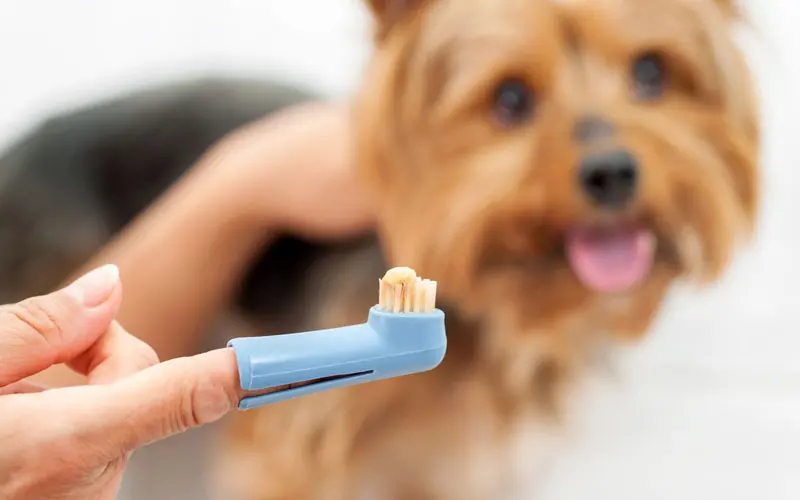What if My Pet Has a Gum Disease—What Happens Next?

Gum disease usually starts with very little outward signs, though vigilant pet owners can sometimes guess at its advancement by little signs like chronic bad breath. By the time it advances, there can be issues such as chronic pain, eroded gums, loose and missing teeth, bone loss and more.
Luckily, however, gum disease is preventable! Because gum disease has such severe consequences, it is important to get your pet the care that he needs. If you take a minute to read one of our recent blog posts which highlighted some signs of gum disease, you will probably be fairly equipped to identify the problem when it arises.
But, you might be wondering what exactly happens when you take your pet to receive the help he needs? This post hopes to answer those questions for you, providing a comprehensive look at treatment options your vet is likely to recommend and implement, with your help of course!
What If My Pet Has Gingivitis?
The best thing about gingivitis is that it is preventable, treatable, and reversible, so be proactive! If your pet has gingivitis, all is not lost, and most especially in regards to teeth. When your pet has this condition, you have basically entered into a race against time. Gingivitis is a condition that could actually be considered “stage one” of periodontitis. With gingivitis, you basically have a problem in which plaque and tartar have built up to pretty high levels within your pet’s mouth and have caused swelling of the gums.
Because gingivitis is rather painful for pets, causing their mouths to feel tender, and also is a precursor to periodontitis, make sure to get it taken care of right away. Early care will help keep costs down: oftentimes, the only professional care needed with this type of gum disease is a deep cleaning and scaling from the vet in addition to implementation of home care advice which your vet will also provide.
When your pet has gingivitis, this is what you can expect:
Treatment Part 1:
- Your veterinarian will conduct a deep cleaning of the gums and teeth to remove all plaque and tartar (hardened plaque) that has built up and created thin crevices between the gum and the teeth. If not removed, the plaque and the tartar push their way further into the gumline, inching their way to the bone!
- Plaque buildup can be removed from these crevices with scaling equipment and other tools, while your pet is under general anesthesia. This allows your vet to thoroughly and safely remove the plaque and tartar on all tooth surfaces and below the gumline, while ensuring your pet experiences no pain (and isn’t even aware) during the procedure.
Treatment Part 2:
- After your vet has done his part in cleaning and removing tartar, there is nothing left within your pet’s mouth to continue eating away at the gumline. However, at this point, the battle is only halfway won. The second part of the treatment stage is actually performed by you!
- The vet has done his part by removing the hardened bacteria (tartar), but the nasty gum-eating elements of bacteria love to come back into your pet’s mouth! Every time your pet eats, you can be sure that plaque and tartar will try to start building up again.
- To help prevent this from happening, scrub away at your pet’s teeth every day using pet toothpaste, an appropriately-sized pet toothbrush, and maybe some sort of refresher regarding pet teeth-brushing best practices. There are also dental hygiene chews your vet may recommend. If you do this every day and follow your veterinarian’s recommended schedule for in-office cleanings, you can literally reverse the damages of gingivitis!
What If My Pet Has Periodontitis?
Be vigilant and take action!
Periodontal disease is dangerous for pets, and in some cases is known to take up to two years or more off of a pet’s life, if left untreated. If your pet happens to have this disease, it’s time to get busy!
Your vet can provide surgical treatment options that can clean out your pet’s gums, provide some healing to the bone and also get his mouth into as good a shape as possible. So what does periodontal surgery look like you may wonder? In brief, periodontal treatment will largely depend on which stage of periodontitis your pet is currently suffering from. Read on to find out what each stage of treatment looks like.
Stage 1 Treatment:
- If you pet is suffering from stage 1 of periodontal disease, a day of treatment may include a thorough cleaning of the teeth and gums by your vet, and also his recommendations about home dental care (quite identical, you may notice, to the treatment of gingivitis).
- Your vet may also request to conduct an x-ray of your pet’s mouth to ensure that there is no bone loss (and that the stage of advancement really is stage 1).
Stage 2 Treatment:
- Stage 2 periodontitis can only be diagnosed with certainty by way of an x-ray. Visible symptoms will only be swollen gums: neither you nor the vet can see through them and into the bone without the x-ray!
- After this treatment, you will most likely hear more on the extra things you can do to help prevent bacteria build-up; some vets recommend giving your dog special kinds of toys to tug at which work at getting rid of plaque during other times of day besides teeth washing time. Other recommendations include adding veggies to your pet’s diet, as they can help, in addition to the regular tooth brushing.
Stage 3 Treatment:
- Stage 3 periodontitis consists of possibly decaying teeth that need to be pulled out as well as bone damage that needs very special treatment.
- First your vet will probably extract the decayed teeth (teeth that won’t grow back but are so unhealthy that they need to be gotten rid of).
- Then your vet might recommend trying to do some advanced bone treatment care. If you want to see a video of such a procedure check out this link below! It has some surgery-type elements to it that might not be for everyone, but if you feel you have the nerves to watch a little procedure, check it out!
Stage 4 Treatment:
- Stage 4 periodontitis is really not the best. It is not comfortable for your pet, nor would it even be safe at this point to keep your pet’s infected teeth in his mouth. Doing so would mean that the dangerous bacteria in his unclean teeth would be nearly sure to make it into the bloodstream and put the kidney and heart at serious risk.
- Usually, the best treatment option is to remove all of the teeth that are hurting the dog or cat. If this stage has been reached, you still have healthy ways you can help your pet get better, but you will have to invest a lot of time and energy in making sure he has the type of food he can eat with little or no teeth. But, if you at least get rid of your pet’s infected teeth, at least he won’t be in as much danger of suffering from bacteria in the blood.
. . .
Though this article has definitely touched on a topic more serious than normal, we do hope it has been helpful for you in raising awareness about how you can keep your pet in good dental care! Schedule an appointment for a dental cleaning and exam today.
Share This Post
Recent Posts
About Shallowford Animal Hospital
Shallowford Animal Hospital and The Pet Spa at Shallowford are dedicated to the exceptional, compassionate care your pet deserves. Pets hold a very special place in our families, and we treat yours like our own.



